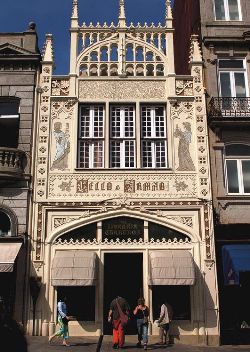| PORTO |
 |
It was in Porto and the north that Portugal came into being as a country, which is why the region has such a rich and fascinating heritage. This is a mountainous area with rivers, natural parks and steep, sloping hillsides covered with leafy vegetation. The granite from its mountains was used to build many of the region’s religious and historical monuments, such as the unpretentious Romanesque chapels and baroque churches. History surrounds you when you visit the region’s castles – the castle at Guimarães was the birthplace of the nation’s founder and first king, Dom Afonso Henriques. And at the countless manor houses and palaces emblazoned with coats of arms, visitors are received with an aristocratic display of hospitality. However, this region also owes much of its character to the great waterway that cuts it in half, the scenic River Douro, whose vine-filled valley is today classified as a world heritage site.The river was given the name of ouro (gold) because it brings the water that the sun-drenched vines rely on to produce the world-famous Port wine. But also because this was the place from which ships used to set sail in the great period of Portuguese discovery. Or perhaps the name is due to the carved and gilded woodwork of the city’s countless baroque churches. The fact remains that this ancient city gave its name to both Port wine and to the nation of Portugal. Much of its heritage is based on shipping and trade, making it a bustling and passionate city. Porto is also classified as world heritage site. Perhaps these are the reasons why Porto finds its way into the hearts of its visitors. |
|
Associação de Turismo de Porto e Norte de Portugal Av. Inferior à Ponte D. Luis I, nº 53 1º
4050-074 Porto Tel. +351 22 332 67 51 Fax. +351 22 332 67 52
|
|
| back | |


